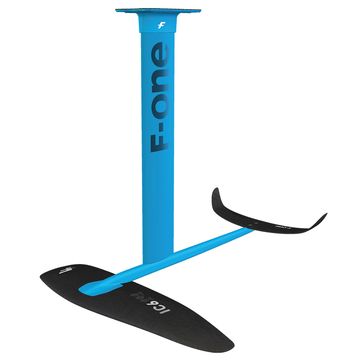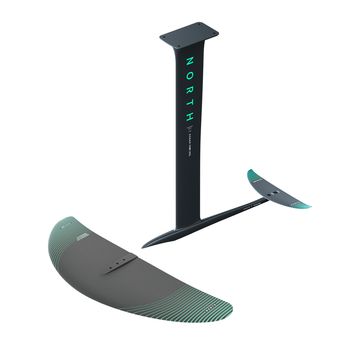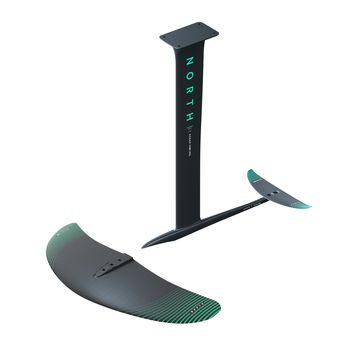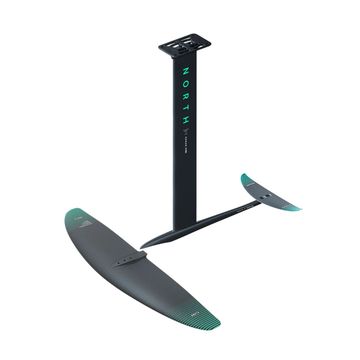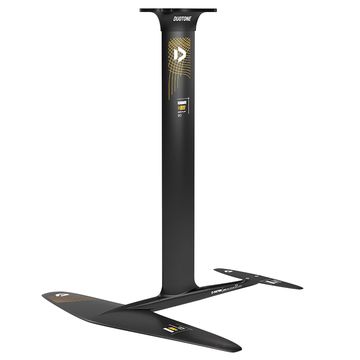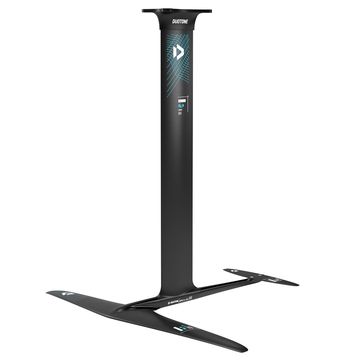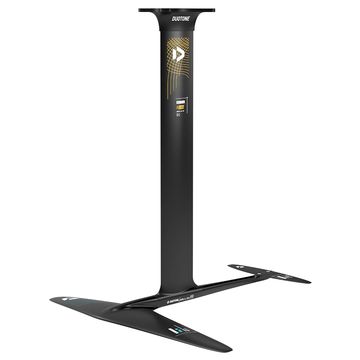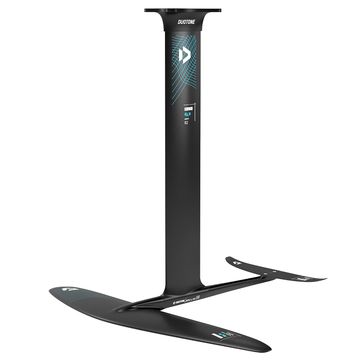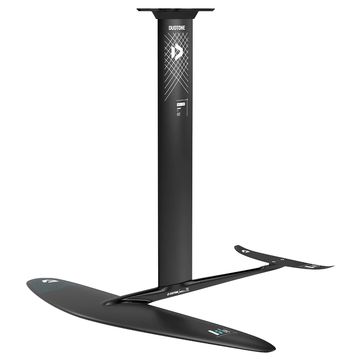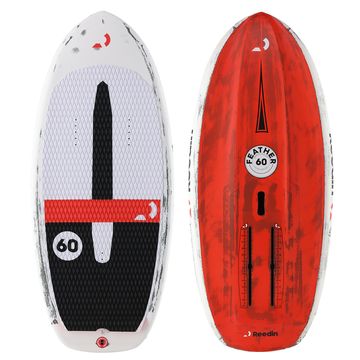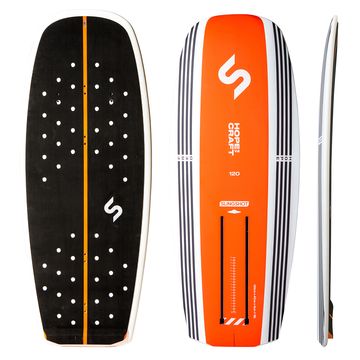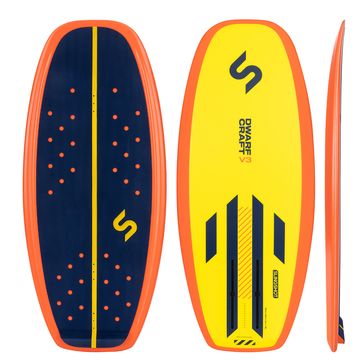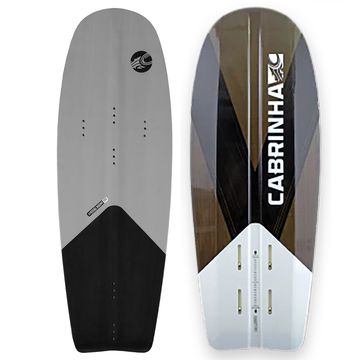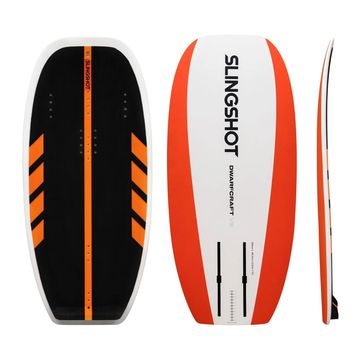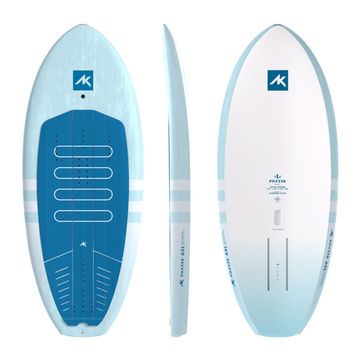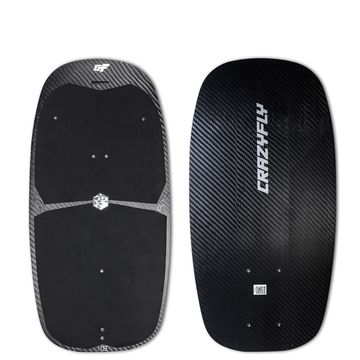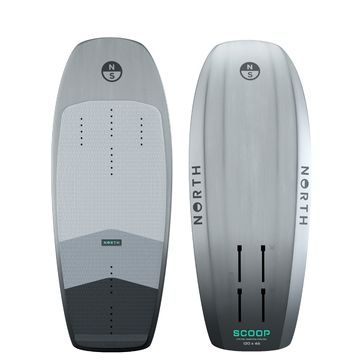Kite Foil Buyers Guide
Within just a few years kitefoiling has gone from an experimental self build sport to an Olympic sport and enjoyed by all types of kiters. Whether you want to go Mach 10 around a race course or just go cruising in winds that aren’t strong enough for your twintip a hydrofoil can be the answer. The development of foils has made it easier to learn and with more kit on the market from every manufacturer there is a foil setup to suit everyone.
Content created by King of Watersports KOW Copyright
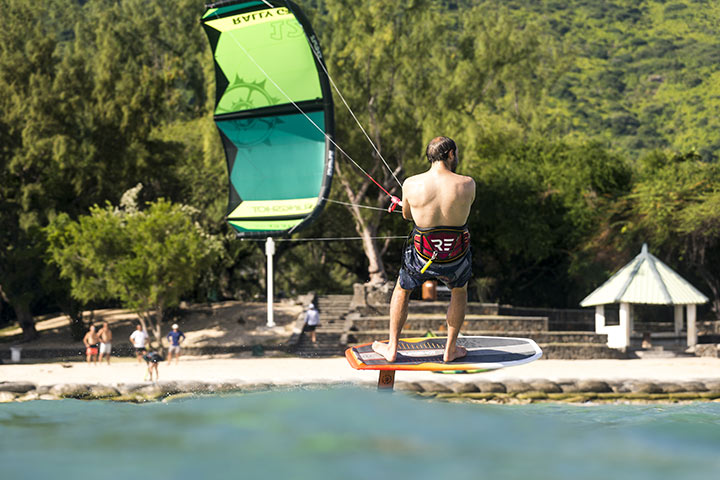
The down side of there being so much kit is that to a complete foiling novice there can be too much choice a lot of foiling language to translate and a lot of numbers to understand.
Once your up and foiling the numbers start to make sense and you will start understand how you can create more or less lift on the kit you have or by changing an aspect of your setup.
Whether your going to get lessons or just going to give it a go yourself there is a few things you will want to consider when it comes to getting your own kit.
Safety kit is highly recommended and if you have lessons in a kite school you will be wearing an impact vest and helmet. Even if you are not having lessons these two items will be recommended by almost everyone who already foils.
The world of hydrofoils can be a bit confusing but if you look at their shape we can start to identify their intended use and then it’s relatively easy to see which will appeal to you at the level you or for what you are aspiring to. Many of the manufacturers have now built their foils on a modular system which means once you are up and foiling you can by a different front wing, rear wing, fuselage and mast to change the way your foil rides.
There is always a lot of chat about going faster when talking about hydrofoiling and it’s easy to think that foiling is just about going fast but in recent years the surf and paddleboard foiling has introduced slower more lifty foils that make getting going slowly work really well and its these foils that are now mostly used to teach people to kite foil. The bigger low aspect foils take off at pretty slow speeds and are really stable making learning control, steering and turning around much easier than in years gone by.
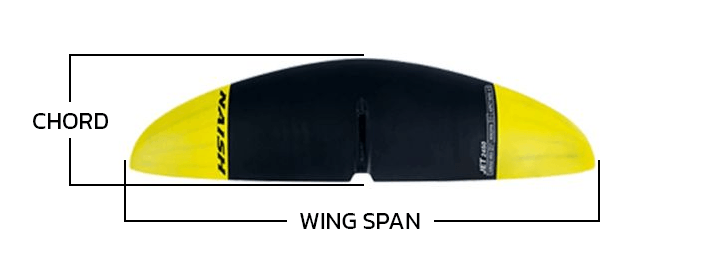
All of the companies will talk about a few different measurements when it comes to hydrofoils, the main ones are:
Wingspan – Width from tip to tip.
Chord – Length from front to back.
Surface area – The average chord length multiplied by the average wingspan will give you the rough surface area in cm squared.
Aspect Ratio – The ratio of wingspan to average wing chord. The easiest way to work out the aspect ratio is to square the wing span and divide it by the wing area.
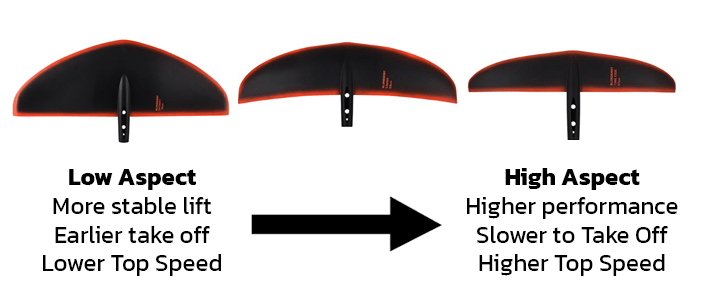
The number that really matter are the surface area and whether you are going to get a low or high aspect foil. If you had two foils of the same surface area but one high aspect and one low aspect they would feel very different in the way they ride. The Low aspect would be quicker to get up foiling and but have a lower top speed and be a bit easier to turn when carving. The higher aspect would be a little slower to get up foiling but faster over all – this means it will glide further; which is when the power from the kite is not there and you glide just using your momentum.
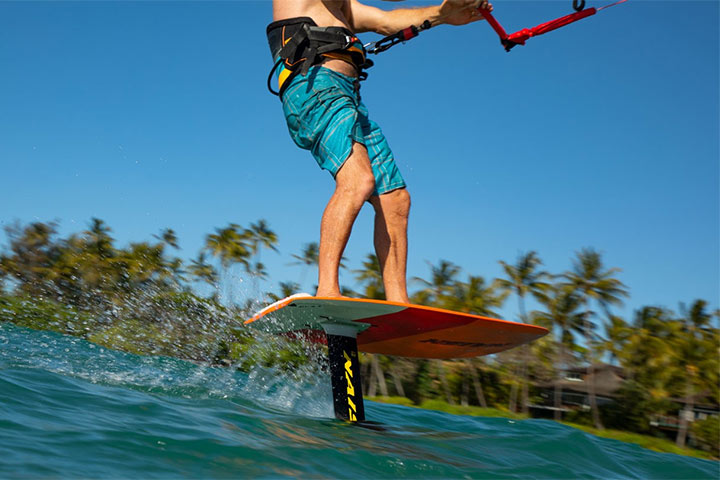
For learning to kite foil, it’s easier to start on a Low Aspect foil. They get up foiling easily at low speed and they also have a lower top speed, and these two attributes will mean you can learn to control the foil easier. Although they may not feel it on your first few sessions, they are also really stable and do not need huge amounts of input from the rider to go in a straight line.
Getting the skills dialled on these “beginner foils” will make life easier if you then decide you want to get something faster. We’ve called them “beginner foils” as they aren’t really beginner foils, whilst they are great for learning they are also great fun for cruising, learning some foiling transitions, some foiling tricks and kite foiling in swell and waves. So they may be just the foil you are looking for.
Sticking with the low aspect foil it then comes down to your size. Smaller riders won’t need as much lift from their foil as a larger rider as there is just less to lift out of the water. So, the smaller riders can choose a foil with a smaller surface area and the bigger people out there will need to go for something a bit bigger. Depending on your size you may want to consider something between 800cm² - 1500cm² in the low aspect foils.
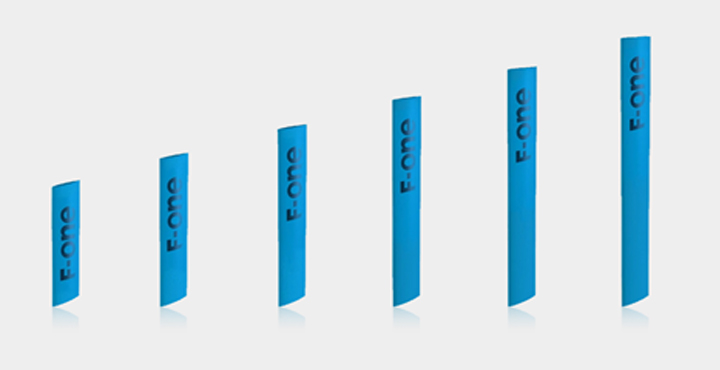
Mast length is worth considering your size. If you are intending to kitefoil somewhere shallow you may have no real choice other than a short mast. These short masts are really good for learning as you cannot create any really big angles and therefore crashes will not be very big and some of the time you will be able to ride away from what may have been a crash on a larger mast. In saying that for most people the short mast will quickly be out grown by your skills and you will want to create more angle to get more speed or tighter turns and you can only do this on the longer masts. Somewhere between 60 and 90cm is great for most.
Board wise its worth getting something that is forgiving and easy to control. Ideally you want to be able to ride along at slow speed without foiling. The two choices you have are a board with or volume or one without. The board with out volume will be a similar construction to that of a twin tip and will have enough float in it to keep the setup on the surface – these boards will be lightweight and strong. The other option, a board with volume, will be floatier and more forgiving when touching down the board on the water if you make a mistake when foiling but will usually be a bit bigger and bulkier (not necessarily heavier) and a bit more delicate. Both will work well and will get your first flights through to cruising around learning transitions and again maybe your only ever foiling board.
There are also crossover boards which will work with a foil but then in removing the foil you could have yourself a twin tip or surfboard making them ideal for travel especially when some of these boards also come as a split board.
A lot of people get into foiling because of those times you have gone to your local beach only to find its 5 knots lighter than forecast and your biggest kite just will not cut it. Instead of now going out underpowered and mowing the lawn back and forth you can hop on a foil and blast at similar speeds, if not faster than you usually would on a fully powered day. There is a bit of theory behind why you can go faster in lighter winds (see box to the left) but what’s important to know is that going out in light winds does bring its own hazards. A kite of any size needs a certain amount of wind to stay in the air and it needs a bit more wind than that to relaunch from the water. So it is worth getting good at light wind kite handling and relaunching skills if you are wanting to get down into the really low wind foiling. Kites that were designed to boost the biggest jumps usually have 5 struts, these struts make a kite heavier, some kites are also reinforced in lots of places but again this makes a kite heavier. Heavier kites will not fly as well in lighter winds as they need more wind to hold them up there. Many manufacturers have introduced light wind kites using the lightest kite materials, less reinforced areas and even reducing the number of struts. There lot of kites now that have one strut and a few kites with no struts at all. All this weight reduction is in aid of keeping a kite in the air in the lightest of winds whilst still developing power and being controllable in the air – although they may be harder to re-launch if you do drop them in the water.
The other type of kite that may be worth considering is a RAM air kite (aka Foil Kite). These kites have no bladders or struts and are therefore really light weight. They are a dual skinned kite that fill with air and have a series of bridles that helps the kite keep its shape. They are really efficient kites because they are light weight, and they are high aspect (wide from tip to tip & narrow from front to back) similar to a glider this means you can often take a small er kite than you usually would with an inflatable meaning the kite will be more manourvable because its smaller but without the lose of power of a smaller kite. As there is no inflatable bladder you will need to be confident in flying kites and really happy relaunching as you will have a limited amount of time that the kite can sit in the water before it gets too heavy to relaunch.
Intermediate and Advanced riders.
For those who have cracked cruising around on a foil there even more options in terms of kit.
From tiny little pocket foil boards that are light weight and manoeuvrable to full carbon race boards designed to push the limits around a racecourse and kites and foils to match. It really does depend on what you want to be doing on the water as to what you decide to get.
Make sure you check out the whole range of boards and foils availble and feel free to get in contact if you have any questions.
Content created by King of Watersports KOW Copyright

